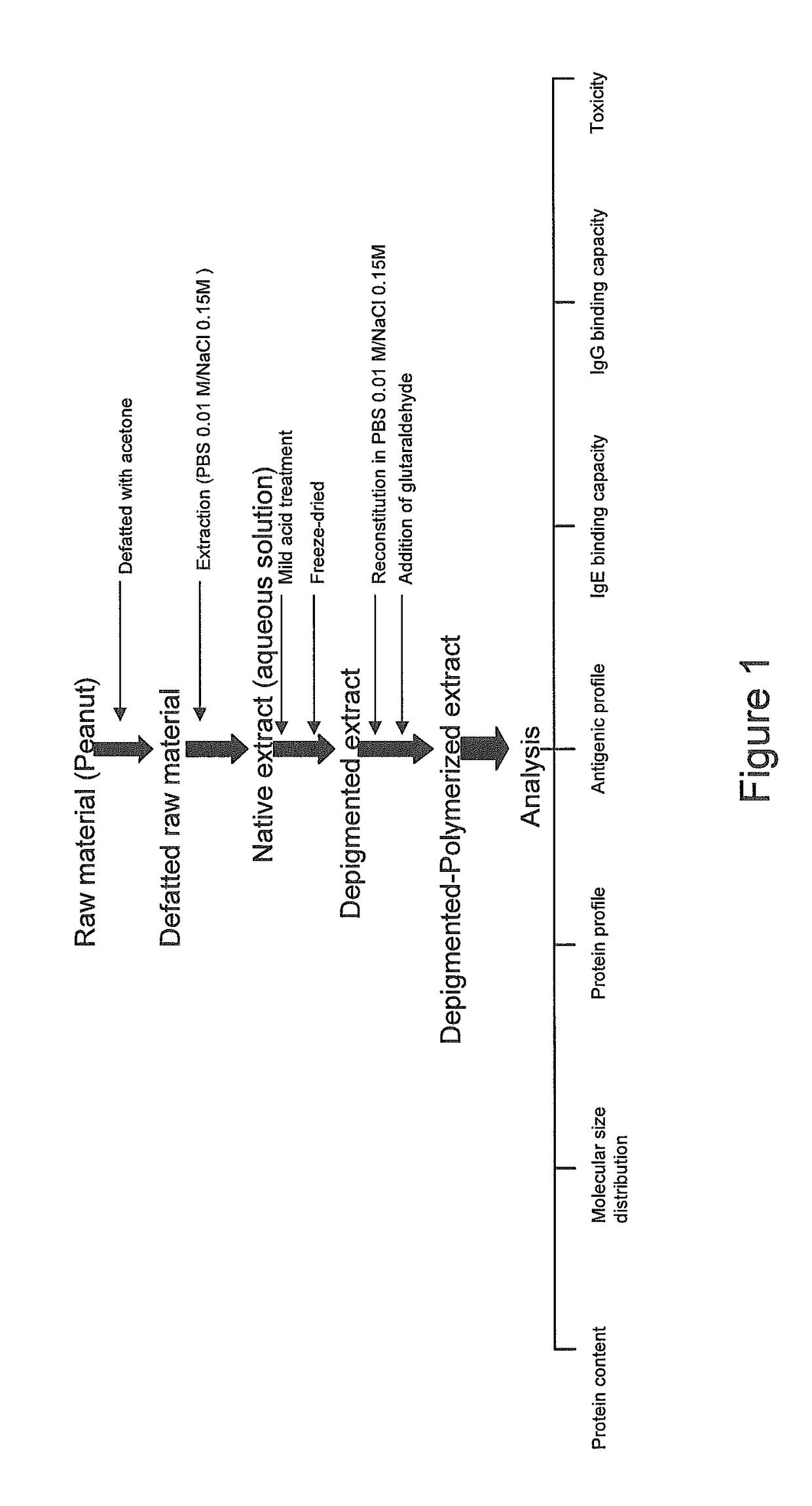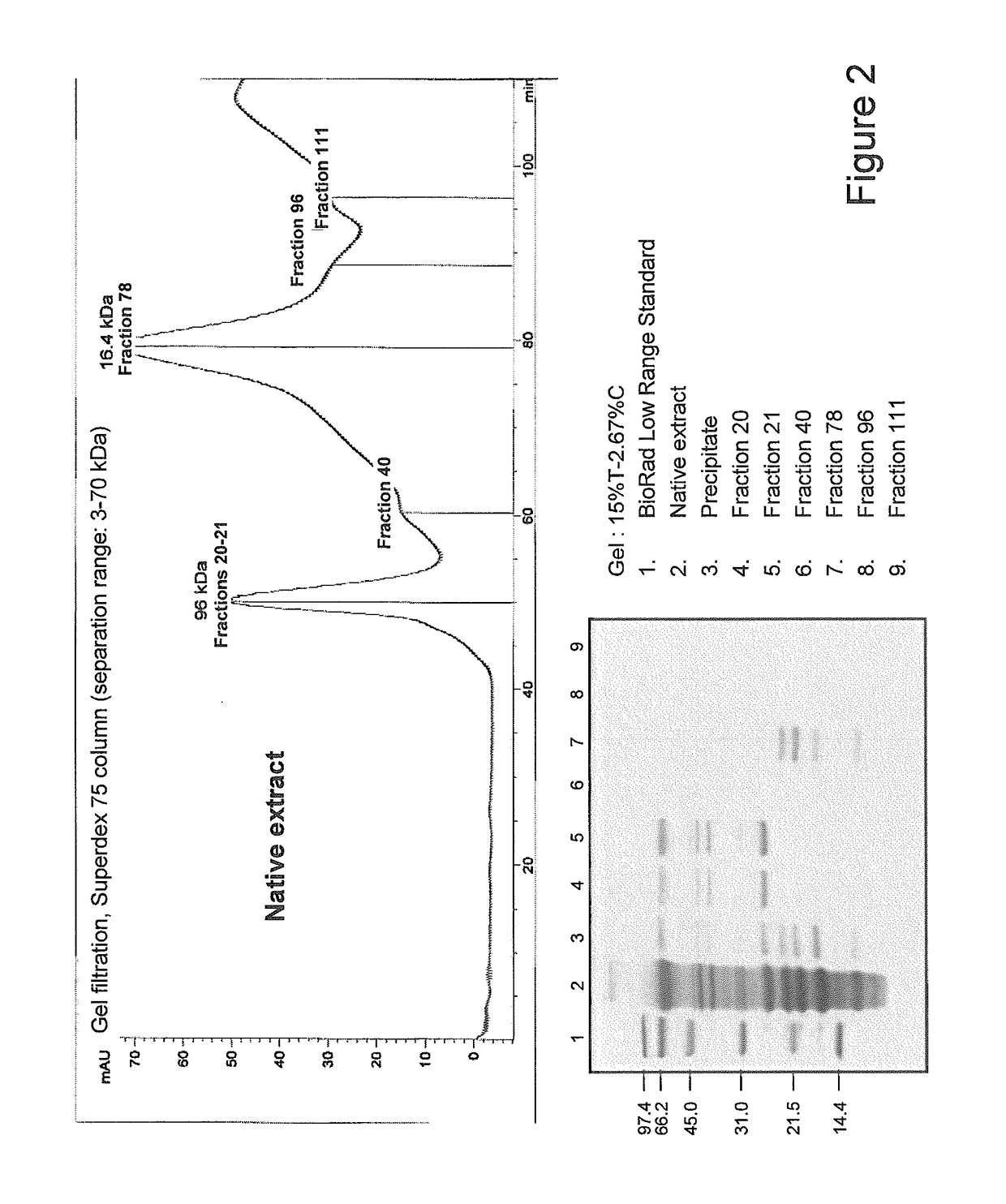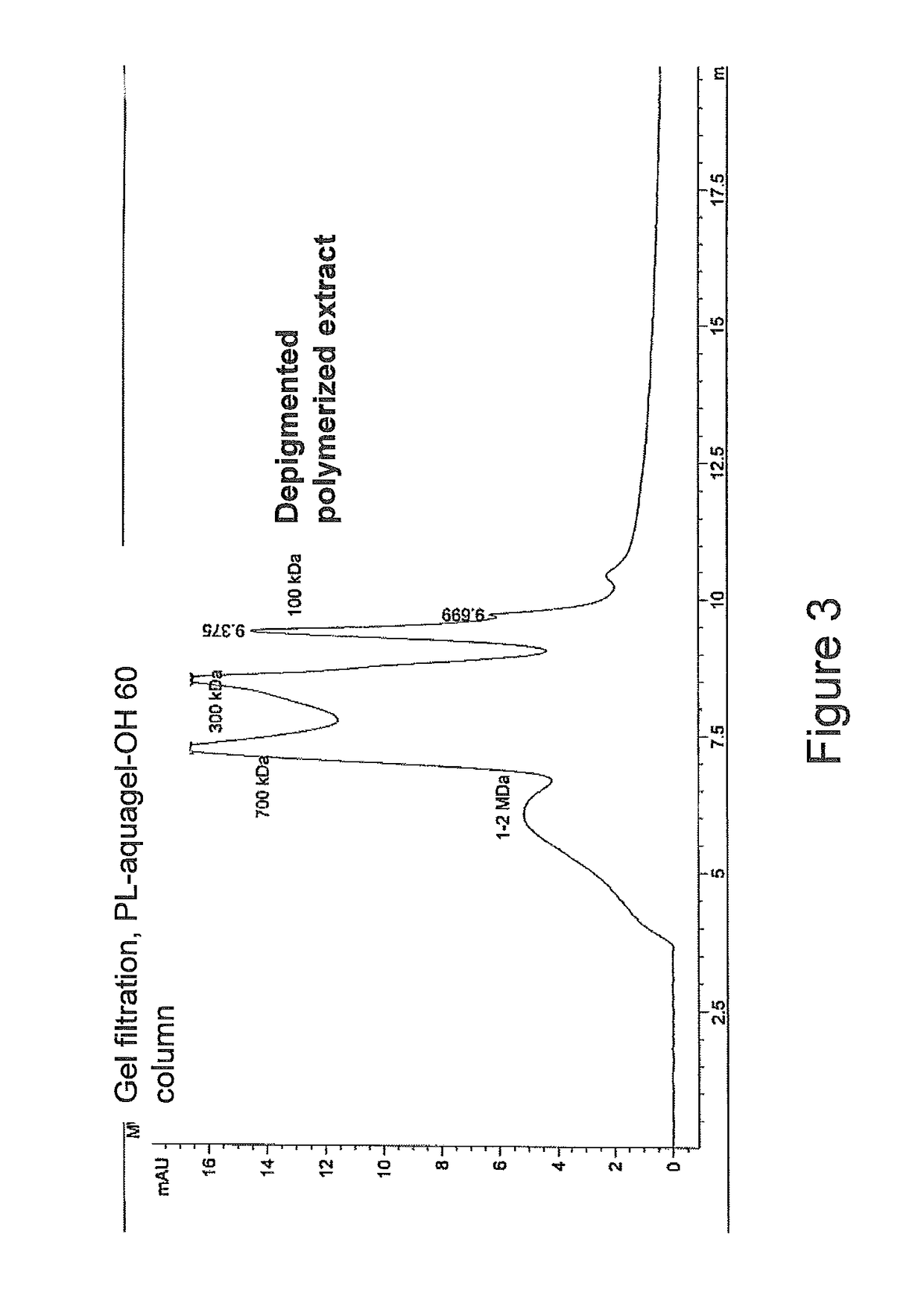Process for producing an allergen extract
a technology of purified allergens and extracts, which is applied in the direction of peptide sources, antibody medical ingredients, etc., can solve the problems of allergic reactions, urticaria and atopic dermatitis, and immunotherapy with allergen extracts is not typically used for food allergy treatment, so as to improve the polymerisation process and reduce the allergenicity of certain extracts.
- Summary
- Abstract
- Description
- Claims
- Application Information
AI Technical Summary
Benefits of technology
Problems solved by technology
Method used
Image
Examples
example 1
lergen Extract
Step A. Defatting Process of Raw Peanut Material
[0130]Peeled peanuts were homogenized in a blender to obtain a homogenized slurry. The homogenized material was defatted with cold acetone in a proportion of 1 kg slurry: 2 L acetone for 1 hour at 3-5° C. under continuous magnetic stirring to extract lipids, fatty acids, and free flavonoids. The resulting solution was filtered in a Buchner funnel. The acetone was removed and the extract was collected in a filter, and washed twice with fresh acetone. The whole process was repeated two more times until the collected acetone was transparent. After finishing the process, the defatted peanut extract was collected and dried at room temperature under a laminar flow hood for 12 hours, until the material was totally dry and all the acetone had been removed.
[0131]Depigmented polymerised peanut allergen extract was obtained in accordance with method steps B-D.
Characterisation of Peanut-Allergen Extracts
[0132]The depigmented polymeri...
example 7
Cat Epithelia Allergen Extract
[0201]Cat hair is defatted with cold acetone in a proportion 1:40 (w / v) after five minutes stirring every hour for 7 hours at 3-5° C. The defatting continued for at least 16 hours without stirring. The resulting solution was filtered in a Buchner funnel and the flakes kept. The cat hair is again defatted with the same acetone for 1 hour at room temperature and repeated twice. The obtained flakes were collected and dried at room temperature under a laminar flow hood for 15 hours, until the material was totally dry and all the acetone had been removed.
[0202]In step B dried defatted skin flakes material obtained from cat hair is weighed and extracted in PBS 0.01 M / NaCl 0.15M in a proportion 1:40 for 4 hours at 3-5° C. and under magnetic stirring.
[0203]Depigmented polymerised cat allergen extract was obtained in accordance with method steps B-D.
[0204]The final product consists on a freeze-dried depigmented and polymerised cat epithelia extract, to be stored...
PUM
| Property | Measurement | Unit |
|---|---|---|
| conductivity | aaaaa | aaaaa |
| conductivity | aaaaa | aaaaa |
| pH | aaaaa | aaaaa |
Abstract
Description
Claims
Application Information
 Login to View More
Login to View More - R&D
- Intellectual Property
- Life Sciences
- Materials
- Tech Scout
- Unparalleled Data Quality
- Higher Quality Content
- 60% Fewer Hallucinations
Browse by: Latest US Patents, China's latest patents, Technical Efficacy Thesaurus, Application Domain, Technology Topic, Popular Technical Reports.
© 2025 PatSnap. All rights reserved.Legal|Privacy policy|Modern Slavery Act Transparency Statement|Sitemap|About US| Contact US: help@patsnap.com



